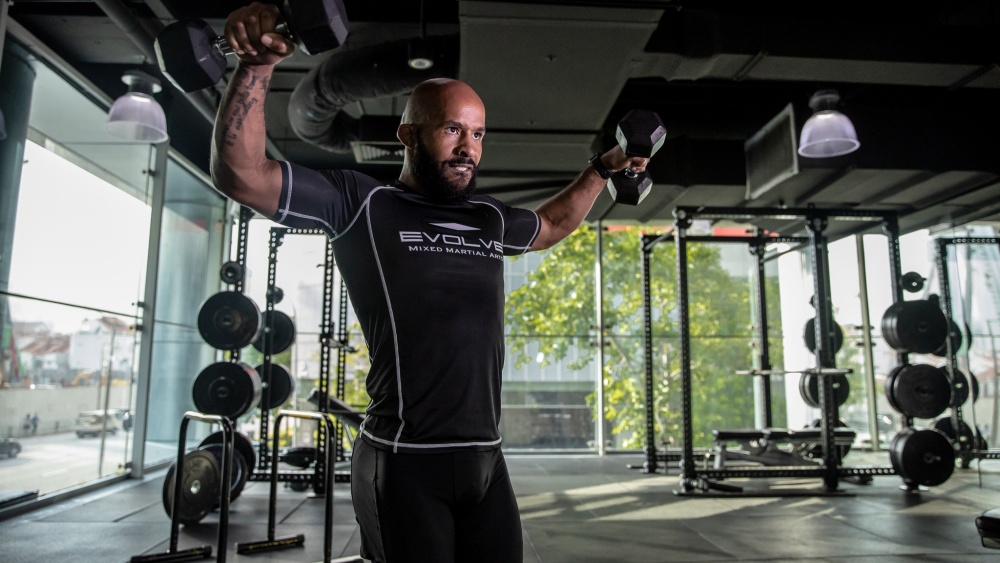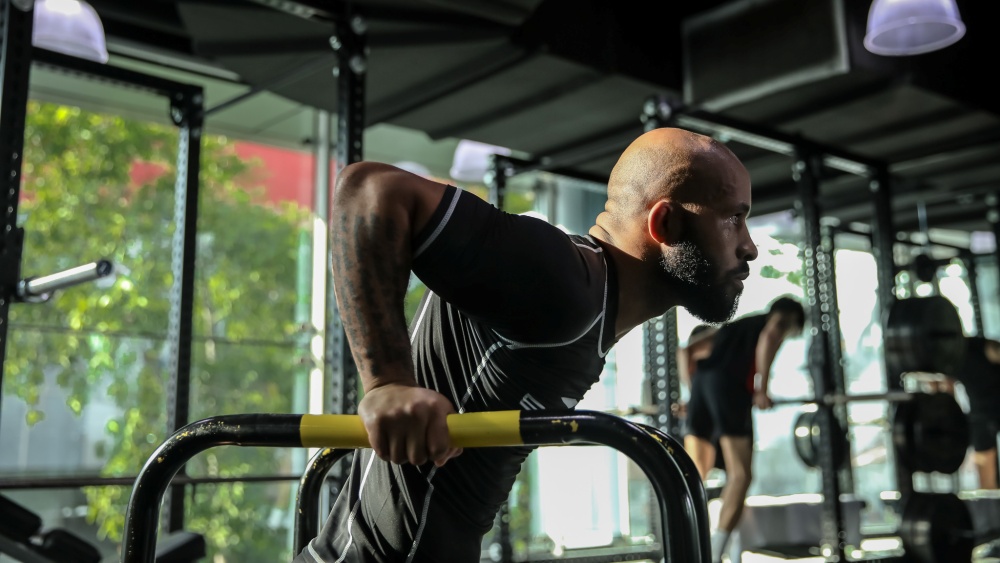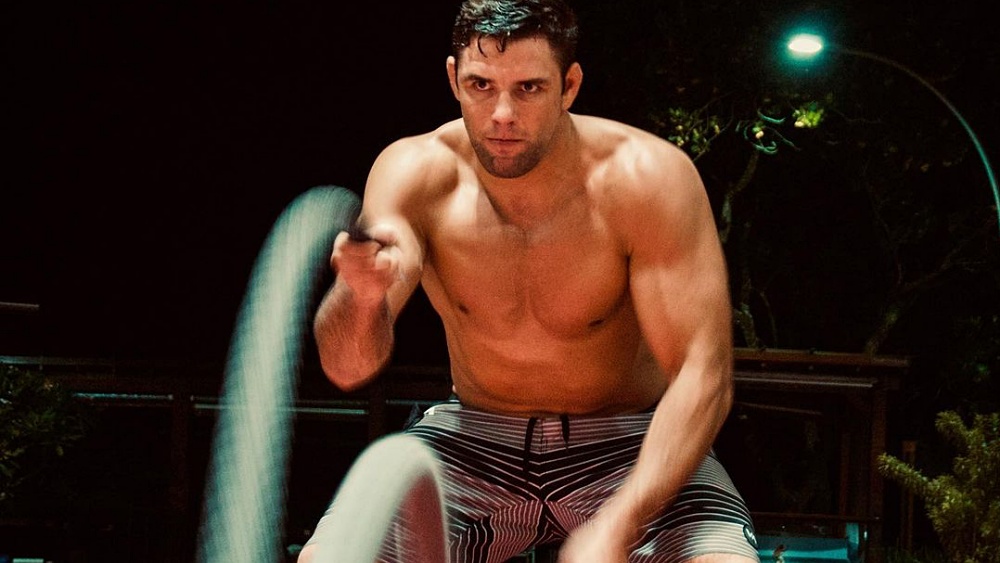Regular upper body workouts will sculpt your torso, but their health benefits are far more meaningful. Exercise builds upper body strength, improves posture, and reduces the risk of injury. Consistent workouts also make it easier to perform demanding physical tasks that come up on occasion. With good posture and a strong upper body, you can move a piece of furniture without too much hassle.
This is in addition to improved metabolism, an increase in bone density, and good cardiovascular health. Adopting a fitness regimen also boosts immunity, a benefit that we can’t take for granted.
Muscles To Target During A Full Upper Body Workout
Exercising the upper body works muscle groups in the arms, shoulders, chest, and back. A full upper body workout also has the added benefit of targeting the core. Here is a breakdown of the different muscles groups of the upper body:
- Biceps, triceps, and forearm muscles in the arms
- Pectoral muscles in the chest
- Deltoids and rotator cuffs in the shoulders
- Trapezius muscles in the upper back
- Latissimus dorsi muscle in the sides and lower back
Put each muscle group through a variety of movements. You do this with weight-bearing exercises, push exercises, pull exercises, and movements that target the core.
The most effective way to put the upper body muscles to work is with weight and resistance exercises. A resistance band, free weights, or your body weight provide what you need for an impactful workout. Here is a list of exercises to add to your upper body workout.
1) Bench Press
This age-old exercise forces your chest, shoulder, and arm muscles to push the weight away from your body. Lowering the weight is also a form of resistance exercise that can be just as taxing as lifting the barbell.
Lie on a flat bench and hold a barbell to your chest to do a bench press. Your hands should be spaced slightly wider than shoulder-width. Engage your core, press your feet against the ground and lift the barbell away from your chest. Lower the weight back to your chest and raise it again. Perform as many reps as you can to complete a set.
2) Pushups
The pushup targets every muscle group in the torso, including the abdominal muscles. You can make pushups more demanding by doing variations of the exercise. For example, you can do pushups on an incline or support your body weight on one arm. There’s a pushup for each fitness level and what matters is that you do each rep in perfect form. Perfect form means:
- Engage your core
- Keep the spine from sagging or arching by engaging the core and back muscles
- The neck should be neutral such that it forms a straight line with the spine
- Each hand should be directly under its corresponding shoulder
Exhaling as you push your body away from the floor also helps with good form. This little trick applies whenever you perform the most challenging part of any exercise.
3) Tricep Dip
This exercise uses your bodyweight to work all the muscles in the upper arms, shoulders, chest, and core. All you need to execute a tricep dip is a solid, stable piece of furniture. Now place the furniture in a way that leaves you ample leg space, then do the following steps:
- Sit on a bench or chair that is steady enough to withstand your weight
- Grip the bench so that your hands are on either side of your hips
- Move your hips forward so that your butt clears the bench
- Your hands should be directly behind your hips, supporting your torso. Your legs should form a right angle at the knees
- Lower yourself towards the floor by bending your elbows to control your descent
- Raise yourself by straightening your elbows when you’re as low as you can go
- Raising your body should put your butt at the same level as the bench, with your legs forming a right angle at the knees
Do as many reps as you can fit into the larger workout session. Ten or fifteen rapid reps should be enough to create a burn in most of your muscles, including your legs. You can add variations of the tricep dip where you extend one leg out before you once this becomes easy for you.
4) Pull-Up
You need an overhead bar with a solid grip for this exercise. Different pull-up exercises have different benefits and difficulty levels. Pick one that matches your current fitness level and work your way up to more demanding variations.
The most straightforward pull-up form is the negative chin-up, where you focus on lowering your body to the ground. You could also do the traditional chin-up, where you use your chest and core muscles to lift and lower your body weight. Take it up a notch with the L pull-up, an exercise that requires you to have your legs stretched out in front of you.
Engage your core and shoulder muscles as you raise your body past the bar. This tip holds for all variations of the pull-up.
5) Pulldown
Pulldown exercises target the latissimus dorsi, the muscle that extends from the lower back to the shoulders. The exercises also target muscles in the shoulders, chest, and forearms. Variations of the pulldown can either be more demanding or less demanding on these muscles. We look at two variations: the lat pulldown and the straight arm pulldown.
5.1 Conventional Lat Pulldown
Exercise machines have handlebars that allow you to lift weights away from the floor by pulling downwards. Sit at the machine, grab the bar with each hand and pull it down to your chest. Your hands should be shoulder-width apart as you perform this exercise. Engage your core and keep your spine straight for each rep.
5.2 Straight-Arm Lat Pulldown
This type of pulldown targets the abs and all the other muscles in the upper body. Grab the straight bar attachment on an exercise machine. The bar is pretty high up, which means you do this exercise while standing. With your palms facing downwards, pull the bar down as far as possible. Keep your core engaged and your arms straight with each rep.
The pulldown is a more versatile alternative to the chin-up because you can adjust the weights that you lift. However, you will need access to an exercise machine for this exercise.
6) Plank
Holding the plank position for as long as you can targets your chest muscles and core. You can hold a high plank position by keeping your arms straight, with your hands directly under each shoulder. Alternatively, you can prop yourself up with your forearms.
Engage your core and keep your spine straight. Now see how long you can stay in position with a straight spine.
7) Overhead Press
This demanding yet straightforward exercise targets the muscles of the upper arms, chest, and shoulders. The overhead press also puts your core to work to a lesser extent.
All you need for this exercise is a pair of dumbbells and a chair if you want to do your reps seated.
Your starting position should be with your back straight and the dumbbells at shoulder level. Keep your feet at shoulder width. Now push the dumbbells upwards until your arms are fully extended above your head.
8) Lateral Raise
This is another exercise you can execute from a sitting or standing position. Grab a dumbbell in each hand, engage your core and keep your spine straight. Keep each foot in line with its corresponding shoulder to make the most out of each side raise. Now position your arms at your sides and raise them sideways to form a T. Be sure to keep your elbows slightly bent to reduce risk of injury.
The lateral raise works the triceps and shoulder muscles. To a lesser degree, the exercise also targets the chest.
9) Rear Lateral Raise
Adding a twist to the lateral raise changes the muscles that the exercise targets. Grab a dumbbell in each hand and part your feet at hip distance. Bend forward so your torso is parallel to the ground and your arms are dangling at your sides. Now tighten your abs, engage your shoulder blades and lift your arms. Raise your arms to the side to form a straight line with your shoulders.
Keep good form by putting a slight bend to your knees and elbows. You also need to keep your spine straight and your neck neutral. The rear lateral is an effective exercise for the rear deltoids and upper back muscles, including the traps.
10) Front Raise
You need a barbell or a pair of dumbbells to execute the front raise. Grab your weights and keep your feet at hip-width apart. Raise the weight in front of you until your arms are at shoulder height, with your elbows bent slightly. Lower your arms and repeat the motion as many times as possible.
The front raise works most muscles in your chest, shoulders, upper back, and arms. Good form requires keeping your torso stationary as you lift the weights. This means engaging your shoulder and core muscles with each rep.
11) Incline Dumbbell Fly
This precision exercise targets the upper regions of the pectoral muscles. It also works the triceps and the anterior shoulder muscles. You’ll need an incline exercise bench to do this variation of the dumbbell fly.
Grab a dumbbell with each hand and lie on the incline bench. Raise your arms to position the dumbbells right above your face. Now lower your arms by opening them up like you would for a hug. In the end, your arms and torso should form a T-shape.
12) Back Squat
The back squat is a full-body exercise that targets the core, lower back, and most of the lower body. All you need is grit and a barbell, and you’re good to go.
Hold a barbell across the back of your shoulders and keep your feet at shoulder-width apart. Now engage your abs, push your chest up and squat until your thighs are parallel to the floor. If you can go lower without losing your form, have at it.
Raise yourself to an upright position by pushing against your heels. It helps to engage your glutes as you lift the weight.
13) Dumbbell Front Raise Squat
This full-body exercise works the shoulders, chest, arms, core, and lower body. Doing the front raise squat in good form also works the lower back muscles.
Your starting position should be with arms at your sides, a dumbbell in each hand, and your feet parted at hip-width. Engage your core and raise the dumbbells straight ahead to shoulder height. Lower yourself to a squat and keep going until your thighs are parallel to the floor. Keep the dumbbells at shoulder level as you raise your body back up.
14) Upright Rows
The upright row targets muscles in the arms, shoulders, core, back, and much of the lower body. You can do this full-body exercise with dumbbells or use a barbell instead.
Hold your barbell or dumbbells in front of you with your arms straight down. This would put the weight at thigh level. Now pull the weight towards your chin by bending your arms upwards and outwards. Raise it till your elbows are at shoulder level. Once you raise the weight to your chin, lower it back to thigh level and repeat.
15) Resistance Band Pull-Apart
Use this exercise to work the chest, shoulders, and upper back muscles. Your starting position should be standing, with your feet at shoulder-width apart. Hold each end of your resistance band with an overhand grip. Now extend your arms in front of you and raise them to the same level as your shoulders.
Pull the band apart without lowering your arms or bending your elbows. Stretch the band until your arms form a T-shape with your torso.
Create Upper Body Workouts That Make A Difference
These exercises can create demanding, high-impact fitness routines that yield results in the medium and long term. Combine them to craft complete upper body workouts that are good for your physique and even better for your health.
You may also like:
15 Strength And Conditioning Training Exercises You Can Add To Your Workout

















